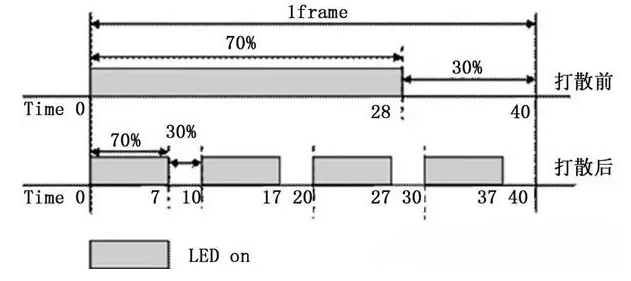Publisher: Supplier of LED Display Time: 2022-09-21 17:08 Views: 1711
"Grayscale" refers to the color gradation of various colors between the darkest and the brightest color with different changes. Generally speaking, the grayscale is above 14 bits (bit), that is, there are at least 16,384 color gradations. High-efficiency LED display. If the number of gray scales is insufficient, there will be insufficient color gradation or insufficient smoothness of the gradation color level, so that the color of the video cannot be fully displayed. The LED display effect is greatly reduced. Some low-efficiency LED displays can already detect obvious color distribution at 1/500s shutter speed. If we increase the shutter speed, such as 1/1,000s or 1/2,000s, the situation will be even more obvious.
What affects the refresh rate and gray level of the LED display?
We know several core components of the LED display, such as LED switching power supply, LED driver chip, LED lamp beads, etc. For the refresh rate and gray level of the LED display, the LED driver chip directly determines the visual refresh rate of the LED display. , the performance of gray scale. Among the current LED driver chips, the newest technology is "ScrambledPWM (S-PWM) technology". S-PWM technology is an improvement of traditional pulse width modulation (PWM) technology, which disperses the time when an image is turned on. into several shorter on-times to increase the overall visual refresh rate. To further explain, the built-in S-PWM technology of the new generation of LED driver chips can break up the original method of counting once per frame (LED die ON→LED die OFF) into multiple counts on average. , and each equal part that is scattered can maintain the original On/Off ratio before it is scattered.

S-PWM technology provides different counting modes, so it can increase the image refresh rate up to 64 times. If S-PWM is used to increase the image refresh rate, only a low-level clock (such as 5MHz) can be used to easily increase the visual refresh rate by 64 times, and it can reach more than 4,800Hz. Compared with the general video visual refresh rate, the ability to refresh frequency is at least 10 times higher, and it can also avoid the problems of high-frequency electromagnetic interference (EMIissue), overvoltage surge (Overshoot) and undervoltage surge (Undershoot).
The LED display of the S-PWM driver chip is photographed with a high-speed shutter of a digital camera, and there is still no horizontal black scanning line and color block distribution. The performance of its visual refresh rate and gray level far exceeds that of LED displays using traditional switching driver chips.